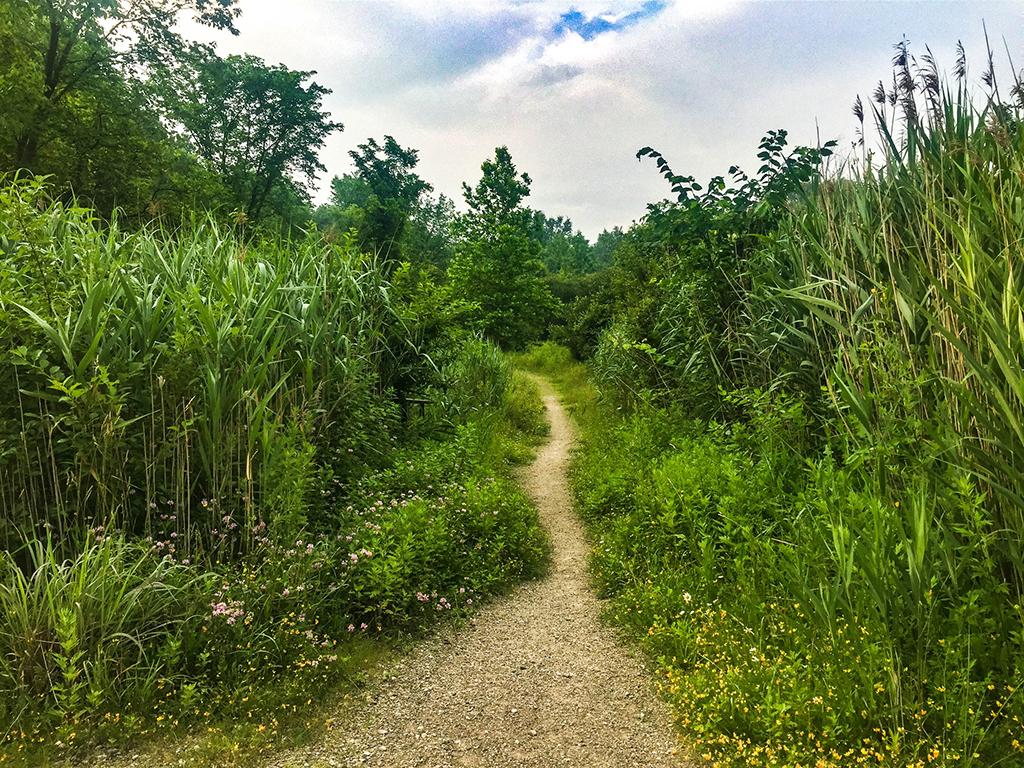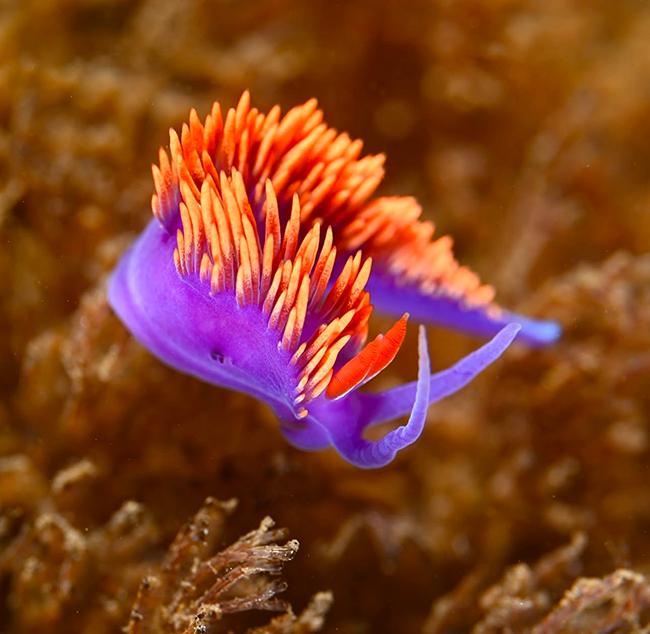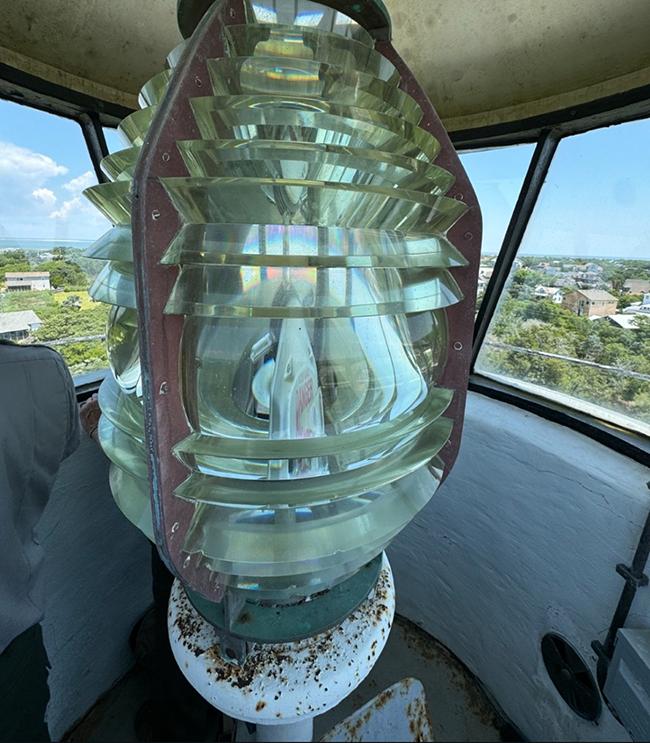
Porcelain Basin landscape, Yellowstone National Park / Rebecca Latson
Happy New Year! It’s time to hone your national parks knowledge with this first quiz and trivia piece of 2025. You may know more than you realize. And if you want to learn more, check out the many National Park Service Instagram accounts, from which came most of the material for these questions and trivia.
1. How many of you have visited Porcelain Basin in Yellowstone National Park? Located within the Norris Geyser Basin, this part of the park has some of the most hottest and acidic features. True or False: There was once a hotel built at Porcelain Basin in Yellowstone National Park.
a) True
b) False

A trail through the tall grass in the Boston Area, Cuyahoga Valley National Park / NPS - Victoria Stauffenberg
2. Visit Cuyahoga Valley National Park in Ohio, and you probably have visited the park’s ___ ecosystsms.
a) Five
b) Six
c) Seven
d) Eight

Googly-eyed flounder, Cape Hatteras National Seashore / NPS - J. Fuss
3. How many of you have gone fishing for flounder at Cape Hatteras National Seashore in North Carolina? Those are some pretty odd eye positions, right? True or False: Flounder are born with their eyes that way.
a) True
b) False

Bright red Christmas berries, Whiskeytown National Recreation Area / NPS file
4. Ok, the holidays are over, but these are still beautiful little red berries known as Christmas berries. You will see them growing at Whiskeytown National Recreation Area in California and they grew back quickly and abundantly after the 2018 Carr Fire. These berries are also called California holly and ___.
a) Toyon
b) Baya roja
c) Red berry
d) California rose hips

A colorful Spanish shawl nudibranch, Channel Islands National Park / Reuven Bank via NPS
5. All sorts of life lives beneath the waves around Channel Islands National Park in California. One of the life forms you might see (if you are underwater, that is) is the Spanish shawl nudibranch, a very colorful sea slug. This is a marine gastropod mollusk in the family Flabellinidae. True or False: Spanish shawls are hermaphrodites.
a) True
b) False

Snakes snuggling during the cold winter months / USFWS - Frank Miles
6. You can find snakes in many units of the National Park System. They are most active during the summer. In the winter, their metabolic rate slows down and their activity levels are reduced, but they never really hibernate. This form of winter inactivity is known as ___.
a) Torpor
b) Brumation
c) Nap time
d) Enervation

What created these little sand balls? Timucuan Ecological and Historic Preserve / NPS file
7. While walking along one of the coastal marshes of Timucuan Ecological and Historic Preserve in Florida, you may come across these little balls of sand left on the shore at low tide. You might even find claw marks near the piles which are neatly stacked beside a ½ inch (1.27 cm) hole in the sand. These little sand balls were created by ___.
a) Soft-shell crabs
b) Dungeness crabs
c) Hermit crabs
d) Fiddler crabs

Christmas tree worms on the coral, Dry Tortugas National Park / NPS file
8. During a snorkel at Dry Tortugas National Park in Florida, you might chance upon some little “Christmas trees” sticking up from the coral reefs. These are called Christmas tree worms and the spiral-shaped parts (the “tree”) of these worms visible on the coral heads are called ___.
a) Spiracles
b) Radioles
c) Spirulinas
d) Parapodium
9. While hiking a trail at Rocky Mountain National Park in Colorado, you might see a deer grazing. True or false: deer are color blind.
a) True
b) False

Orange mushrooms growing in the woods, Big Thicket National Preserve / NPS file
10. The damp shady woods of the Big Thicket National Preserve in Texas provide ideal habitat for fungi. Researchers have identified ___ species of mushrooms in the preserve, including several species that were previously unknown to science.
a) 432
b) 576
c) 660
d) 725
Trivia

A Dromedary pearlymussel with eggs / USFWS - Ryan Hagerty
A number of units within the National Park Service are home to various species of freshwater mussels. One of these species is the Dromedary pearlymussel (Dromus dromas). According to the U.S. Fish and Wildlife Service:
The Dromedary pearlymussel has a unique strategy for reproduction. The female disguises her eggs to look like flatworms or blood worms and releases them into the water like a lure. When the unsuspecting fish scoots over to eat the “worm” (aka fertilized eggs), some of the eggs will attach to the fish’s gills. The fertilized eggs, called glochidia, will feed off the fish for several weeks until they mature and drop off to their new home on the river bed.”

A Fresnel lens, Cape Hatteras National Seashore / NPS - S. Johnson
Did you know the Okracoke Light Station at Cape Hatteras National Seashore in North Carolina uses a unique lens called the Fresnel Lens. According to park staff:
In 1822, Augustin Fresnel finished his design of a flashing lens using bullseye-shaped panels to provide a much stronger beam of light by capturing about 80 percent of its light. Before its invention, the light could only be seen 8-12 miles [12.9 – 19.3 km] away. A beam from a Fresnel Lens can be seen more than 20 miles [32 km] away, all the way to the horizon.
The lens can be fixed, showing a steady beam of light, or revolving to produce a flash. The number of flashes per minute is determined by the speed at which the lens revolves. Originally, a clockwork mechanism was used to rotate the lens. Flash patterns are unique to every lighthouse and important for mariners to determine their location. The Bodie Island and Ocracoke lighthouses currently house these lenses. The Cape Hatteras Lighthouse will be equipped with a replica of its original lens as part of the current restoration project.

Spotted bird grasshopper, San Antonio Missions National Historical Park / NPS - Andrew Shirey
While visiting San Antonio Missions National Historical Park in Texas, you might see a spotted bird grasshopper blending in with the greenery. It remains camouflaged until it flies, then revealing its bright yellow and black wings.
According to park staff:
Despite its name, the spotted bird grasshopper doesn’t actually chirp like other grasshoppers. Instead, it’s known for its powerful leaps and impressive wingspan. These grasshoppers feed on a variety of plants, making them both important players in our ecosystem and sometimes mischievous munchers in gardens.
Quiz Answers
1a True
Despite the dangers of the Porcelain Basin area, there were four lodgings built at Norris, according to park staff. The Norris Hotel (aka Norris Lunch House or Lunch Station) was the last of the four lodges and was constructed in 1901. It closed in 1916 and was demolished in 1928.
2c
Cuyahoga Valley National Park is home to seven ecosystems: wetlands, the Cuyahoga River, lakes and ponds, rivers and streams, watersheds, forests, and grasslands.
3b False
Young, larval flounder have an eye on each side of their head, but as they age into juveniles one eye migrates to join the other on the same side. This helps them watch for predators lurking above.
4a
Christmas berries are also called California holly and toyon.
5a True
Spanish shawl nudibranchs are hermaphrodites, meaning they have both male and female reproductive organs. Self-fertilization is rare, but they can mate with any other Spanish shawl nudibranch they encounter.
6b
Ok, while most of these choices are alike, the real answer for snakes (and other reptiles) slowing down in the winter is known as brumation. "Torpor" is typically used to describe a state of reduced activity in mammals, while "brumation" is used for reptiles. During brumation, snakes will occasionally wake up to eat, drink, and catch some rays on a sunny day. Several snake species are even known to brumate together.
7d
These little sand balls, called “sand pellets,” are the result of fiddler crabs feeding in the sand. Fiddler crabs are scavengers, and they will eat decaying plant matter, algae, and fungus. These clusters of sand pellets are the remains of fiddler crabs sifting through sand while they feed on the organic material mixed within.
8b
The spiral-shaped parts of the Christmas tree worm are called radioles. These feather-like appendages circle outward and aid in feeding and respiration. The rest of the segmented worm is protected within a tube that it has bored into the coral reef, and if startled, it will quickly withdraw into its coral tube, much like a turtle head retracts into its shell.
9a True
Deer are red-green colorblind. They have what is known as dichromatic vision, meaning they can see short (blue) and middle (green) wavelengths, but are less sensitive to long wavelengths like red and orange except as shades of gray, so hunters, hikers, and photographers use clothing of these colors to be visible to other humans but not to deer.
10c
Researchers have identified 660 species of mushrooms in Big Thicket National Preserve, including several species that were previously unknown to science. According to park staff, “In addition to serving as decomposers, many soil fungi have symbiotic relationships with trees, where they transport nutrients and water into tree roots in exchange for receiving sugars from the trees. Most soil fungi are invisible to our eyes until they produce mushrooms, the familiar growths that emerge quickly and exist only long enough to release spores. You may also see hard bracket fungi growing on dead trees. Also known as shelf fungi or conks, these durable decomposers can last for months or even years … The Kirby Nature Trail and Turkey Creek Trail are usually good places to see mushrooms in the fall.”




 Support Essential Coverage of Essential Places
Support Essential Coverage of Essential Places






